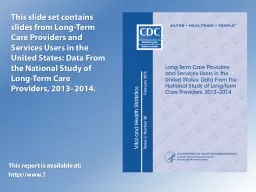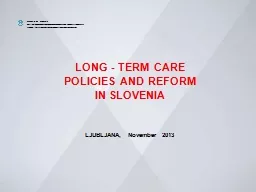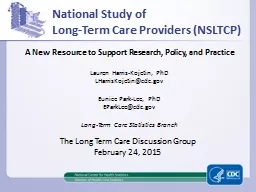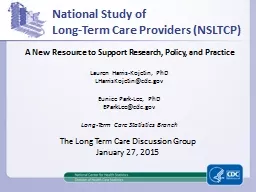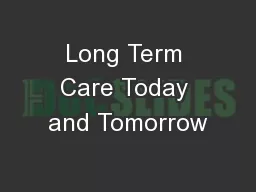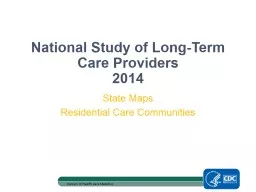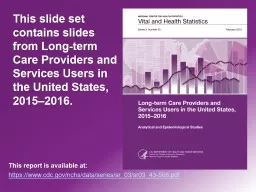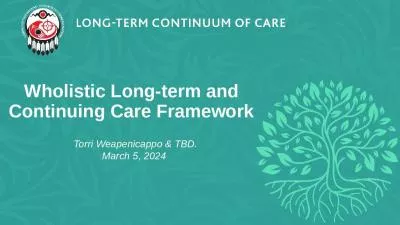PPT-Long-Term Care Providers and Services Users in the United S
Author : liane-varnes | Published Date : 2016-10-17
This report is available at httpwwwcdcgovnchsdataseriessr03sr03038pdf This slide set contains slides from LongTerm Care Providers and Services Users in the
Presentation Embed Code
Download Presentation
Download Presentation The PPT/PDF document "Long-Term Care Providers and Services Us..." is the property of its rightful owner. Permission is granted to download and print the materials on this website for personal, non-commercial use only, and to display it on your personal computer provided you do not modify the materials and that you retain all copyright notices contained in the materials. By downloading content from our website, you accept the terms of this agreement.
Long-Term Care Providers and Services Users in the United S: Transcript
Download Rules Of Document
"Long-Term Care Providers and Services Users in the United S"The content belongs to its owner. You may download and print it for personal use, without modification, and keep all copyright notices. By downloading, you agree to these terms.
Related Documents

